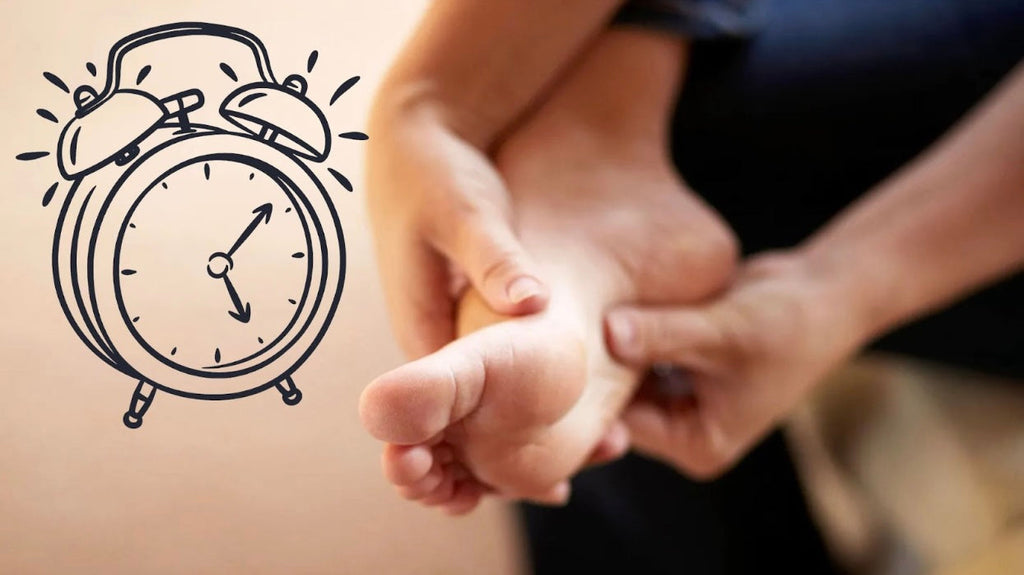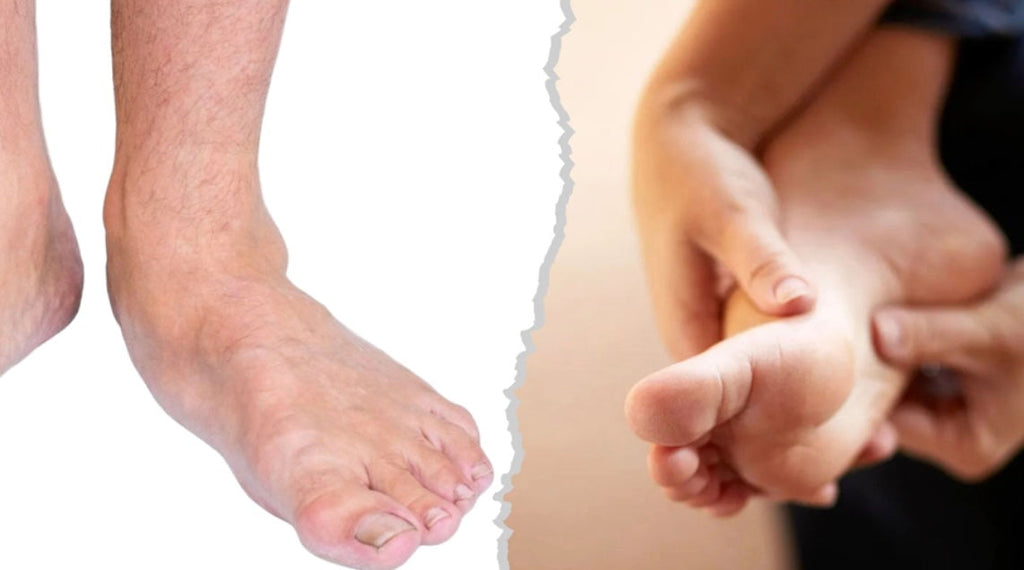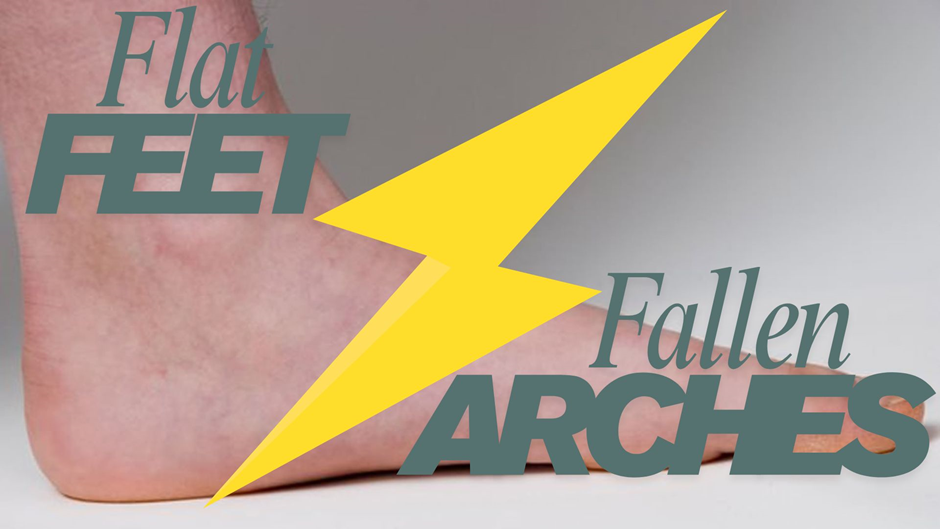How To Relieve Pain on the Bottom of Your Foot
To quickly relieve foot pain on the bottom of your foot, use a combination of cold therapy, elevation, supportive footwear, and daily foot care:
- Apply an ice pack wrapped in a towel to the sore area for 15 to 20 minutes, at least 3 times daily.
- Elevate the affected foot above heart level while resting to reduce swelling.
- Wear shoes with orthotic inserts.
- Avoid walking barefoot on hard surfaces.
- Soak your foot in Epsom salt water for 10 to 15 minutes daily, preferably after activity.
These simple, science-supported home remedies explained below can reduce pain and swelling and improve function. This guide outlines comprehensive treatments that address both symptoms and root causes, enabling long-term relief. If they don't work, you might need to look at orthotics, like for flat feet or plantar fasciitis.
Elevating the Foot
Keeping the foot elevated while resting increases the flow of body fluids to the swollen foot area, decreasing the pain and inflammation.
Instructions:
- Lie on your back.
- Stack a few pillows below your calf muscle, elevating the foot slightly above heart level.
- Keep your foot elevated for at least 30 minutes.
- You can repeat foot elevation twice a day,
Ice Pack Therapy
Icing consistently reduces tissue inflammation by constricting the blood vessels around the sore part of the foot. It’s the quickest way you can reduce pain. However, you have to repeat ice therapy four times a day and continue daily until the swelling and pain go away.
Instructions:
- Place ice cubes or an ice pack in a towel.
- Apply the towel and hold it on the sore area of your feet for at least fifteen minutes.
- Don’t forget to place a cloth or a towel between the ice and skin to avoid frostbite.
Supportive Shoes
Wearing supportive shoes, especially from reputable orthotic footwear brands, keeps your foot aligned and pain at bay. Here are some quick points to help you pick the right shoes:
- Custom orthotic insoles with arch support for foot stabilization.
- The heel-to-toe drop must be around 8 to 12 mm, which can reduce heel strain.
- The shoe material should be breathable.
- A snug heel and a spacious toe box for relaxing comfort.
No matter how expensive the shoes, most start showing signs of wear and tear within three to six months of use. Worn-out shoes fail to distribute pressure evenly on the ankles, aggravating the already persistent foot pain. Many studies have recorded a reduction of more than 20% in foot pain after switching to quality supportive footwear.
Furthermore, a random trial revealed cushioned insoles reduced heel pain by over 50% within two weeks among patients with plantar fasciitis. Even the recommended first-line conservative treatment includes semi-rigid orthotic devices for the necessary foot pain relief. If you have flat feet, orthotic insoles are a must-have, whereas for high arches, go with neutral cushioned models.
When it comes ot heel cups or insoles, podiatrists recommend replacing them every six months or earlier when they begin to flatten or lose integrity. For people serious about relieving foot swelling and discomfort, picking shoes with exceptional foot support can be a game-changer.
Epsom Salt Soaking
If your work requires prolonged standing or extensive walking, you are likely to experience muscle fatigue, swelling, and foot pain. Soaking sore feet in Epsom salt relaxes tight tissues, eases muscle tension, and decreases swelling in the plantar region while the warm water increases blood circulation.
In a clinical study, around 70% of participants reported excellent results after regular Epsom salt soaks for plantar fascia tightness. However, if you have any open wounds, skin infections, or issues with blood circulation, it’s best to consult your healthcare provider before trying Epsom salt soaks.
Foot Massage
Increasing the blood circulation to painful foot areas through massage techniques is another effective way to try. Massage increases the blood flow, reduces muscle tension, and stiffness.
Thumb massage: Use your thumbs to massage in a circular motion on the arch, heel, and around the painful foot area for two minutes per side.
Tennis Ball Massage: Roll a tennis ball under the foot arch for five minutes. Maintain steady foot movement for optimal effect.
Frozen Bottle Roll: Simply roll a frozen water bottle under the sore foot for five minutes. It’s the most effective technique as it combines massage with cold therapy. A controlled study found that 85% of participants experienced significant relief after four weeks of daily rolling exercises.
OTC NSAIDs
These drugs can provide quick but temporary relief from foot pain and inflammation. Some common OTC NSAIDs (Non-steroidal anti-inflammatory drugs) include ibuprofen and naproxen. While these painkillers can be taken once in a while, using them daily without your doctor’s recommendation can cause moderate to severe side effects. These can be anything from a mild gastrointestinal upset to kidney damage.
Contrast Baths
Statistics from rehabilitation studies strongly suggest contrast baths to reduce foot pain, increase circulation, and boost tissue healing.
Instructions:
- Take two tubs and fill one with cold water (50–60°F) and the other with warm water (100–110°F).
- Soak the foot in cold water for 30 seconds.
- Switch to the warm water tub and wait for another 30 seconds.
- End the cycle with another 30-second cold water soak.
- Repeat the cycle 5 to 7 times daily.
Daily Moisturizing
Apply a urea-based moisturizer to manage heel and foot pain. These dermatologically tested mositurizers maintain the skin elasticity, repair heel fissures, and reduces pressure-induced foot pain. Shea butter, glycerin, or petrolatum-based moisturizers are also some great alternatives. Always wear breathable cotton socks after applying mositurizer to prevent friction and retain moisture.
Manage Prolonged Standing
While it might be possible for some people to avoid standing or walking for long hours, strict workplace demands leave little room for flexibility. In these scenarios, here are some options to consider:
Use anti-fatigue mats in areas where you might need to stand.
Shift your body weight from foot to foot after a while.
Night Splints
If the cause of your constant foot pain is plantar fasciitis, night splints is the perfect remedy to deal with that annoying morning stiffness and pain. You can wear a semi-rigid splint to hold your foot at a 90 degree angle during sleep. Podiatrists recommend using night splints for several months, particularly in cases of plantar fasciitis.
Start wearing it for a few hours each night, allowing your body to adapt gradually. Studies show that up to 60% of users report notable pain reduction within three months. Night splints can be uncomfortable at first. Consult a podiatrist if you experience circulation issues, discomfort, or difficulties with use.
Anti-Inflammatory Diet
While most people won’t even bother improving their diet, switching to healthy eating habits is known to reduce foot inflammation and promote soft tissue recovery.
Some of the most common foods you can include are listed as follows:
Spices: Turmeric (curcumin study) and ginger (gingerol)
Fruits: Blueberries, strawberries, cherries
Vegetables: Spinach, kale, broccoli
Proteins: Fatty fish like salmon, sardines, or mackerel (Omega-3)
Add these foods to your meals to support your foot pain management.
If you are known to have food allergies or don’t know where to start when it comes to reaping the benefits of these anti-inflammatory foods, it’s best to seek advice from a nutritionist. They will create a diet plan focusing on foods to aid you in managing foot pain.
When to Visit Your Healthcare Provider
Most cases of mild foot pain and swelling can be managed by the remedies that you just read above. However, some cases can turn chronic and require immediate medical attention. Please consult your doctor if you notice or are dealing with a few of the following issues:
-
Pain persists beyond 7–10 days despite treatment
-
Swelling, redness, or heat in the affected area
-
Tingling or burning sensations
-
Visible deformities, bone spurs, or lumps
-
Inability to walk or bear weight
-
History of diabetes or circulatory issues
While the foot pain management remedies shared earlier relieve pain and swelling, your focus should be on addressing the root cause of your foot pain. You can start seeing improvements within a few weeks after starting a home treatment routine. Still, if you feel confused, a podiatrist can guide you toward practical solutions.
Foot pain on the bottom of the foot can be managed at home using straightforward, research-backed strategies like regular icing, elevation, proper footwear, foot soaks, massage, and dietary adjustments, which can collectively reduce pain and enhance healing. Maintain a consistent foot treatment routine, and you’ll experience substantial relief within a week. If symptoms persist or recur after a few days, go for a professional evaluation by a podiatrist for a diagnosis and more advanced treatment options.




